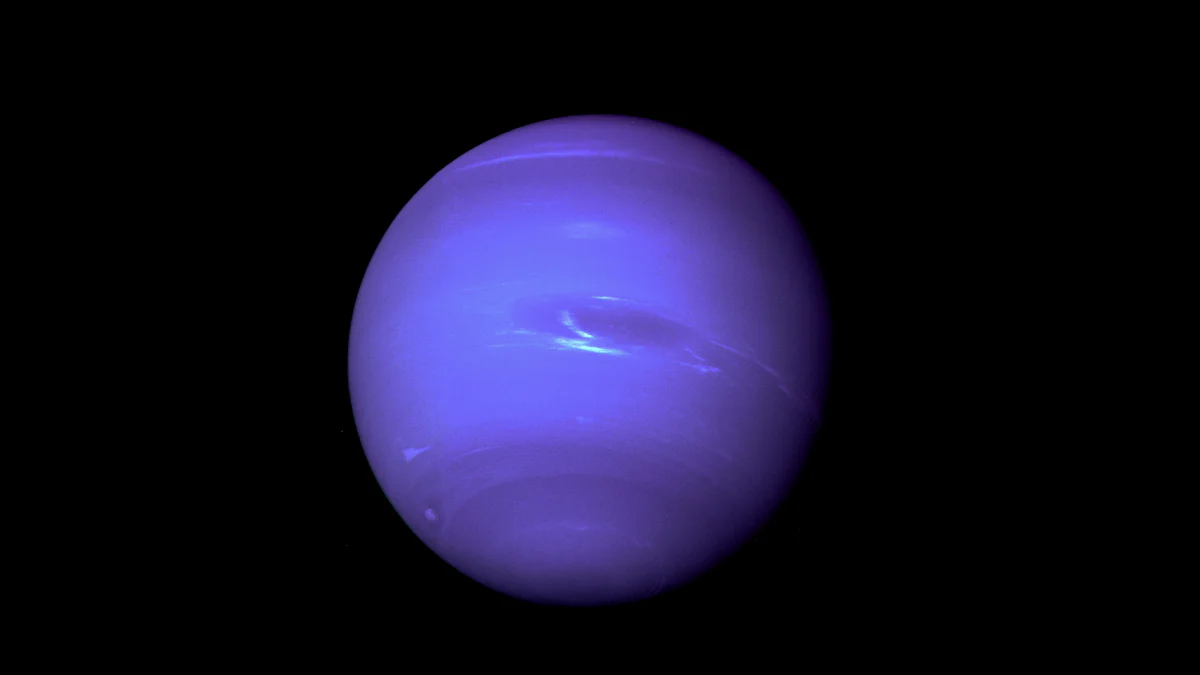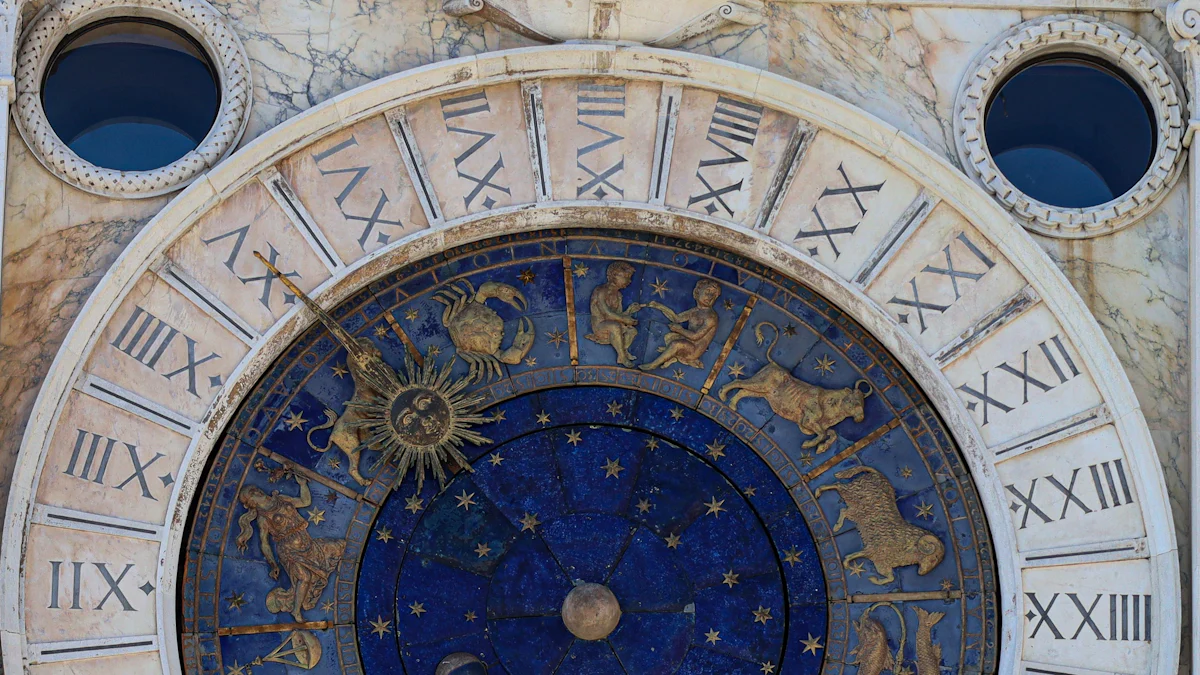
Neptune and Pluto align in conjunction only once every 492 years, marking some of the most transformative periods in human history. These rare events often coincide with profound societal shifts. For example:
In 84/83 BCE, civil wars reshaped Rome, while Buddhism expanded beyond India.
In 411-412 CE, the fall of Rome paralleled the rise of new cultural influences in Asia.
In 905, Tang China declined as European nations began to emerge.
These cycles reveal patterns of collapse and renewal, offering a lens to understand how civilizations evolve. How might studying Neptune-Pluto conjunction dates help us anticipate future societal transformations?
Key Takeaways
Neptune and Pluto align every 492 years, bringing big changes.
These alignments often happen when old systems fail and new ideas rise.
Looking at past Neptune-Pluto cycles shows patterns in how societies change.
These cycles affect governments, economies, culture, and art, guiding creativity.
The next alignment in 2385 might lead to amazing science and spiritual growth.
It could change how humans connect with technology and nature.
Understanding Neptune-Pluto Cycles
The Nature of Neptune-Pluto Conjunctions
Neptune-Pluto conjunctions occur approximately every 500 years, marking the completion of a significant astrological cycle. This cycle reflects the alignment of Neptune and Pluto, two of the most distant planets in the solar system. Their conjunctions represent rare moments when their energies merge, influencing humanity on a collective level.
The duration of this cycle is calculated based on the orbital periods of Neptune and Pluto. Neptune completes its journey through the zodiac in 164 years, while Pluto takes 244 years. Together, their combined cycle spans roughly 500 years. The table below illustrates their individual and combined durations:
Cycle Type | Duration (Years) | Notes |
|---|---|---|
Neptune Cycle | 164 | Roughly two-thirds of Pluto’s cycle. |
Pluto Cycle | 244 | Completes one cycle of the zodiac. |
Neptune-Pluto Cycle | ~500 | Conjunctions occur every 500 years. |
In addition to conjunctions, oppositions occur midway through the cycle, approximately 250 years before and after each conjunction. These phases often coincide with pivotal historical events, reflecting the dynamic interplay of these planetary energies.
The Astrological Significance of the Neptune-Pluto Cycle
Astrologers view Neptune and Pluto as symbols of profound spiritual and societal transformation. Neptune embodies spirituality, dreams, intuition, and creativity. It represents humanity’s search for higher meaning and the dissolution of illusions. Pluto, on the other hand, signifies transformation, power, and the process of death and rebirth. It governs the unconscious forces that drive change and renewal.
When these planets align in a conjunction, their energies combine to create a powerful force for transformation. This alignment often dissolves outdated beliefs and structures, paving the way for new paradigms. The Neptune-Pluto conjunction fosters spiritual growth on a collective scale, encouraging societies to embrace their potential and reimagine their futures. These cycles often coincide with the emergence of new cultural, philosophical, or technological movements, reflecting the transformative power of this alignment.
The Neptune-Pluto cycle serves as a cosmic clock, marking periods of collapse and renewal. By studying these cycles, astrologers can gain insights into the forces shaping human history and anticipate future societal shifts.
Historical Timeline of Neptune-Pluto Conjunction Dates

Key Conjunctions in History
Neptune-Pluto conjunction dates have marked pivotal moments in human history. These alignments often coincide with significant cultural, political, and technological shifts. The following table highlights key conjunctions over the past 4,000 years:
Year | Degree | Sign |
|---|---|---|
2560BC | 01° | ♈ |
2065BC | 10° | ♈ |
1569BC | 20° | ♈ |
1073BC | 00° | ♉ |
578BC | 09° | ♉ |
84BC | 15° | ♉ |
412AD | 21° | ♉ |
906AD | 28° | ♉ |
1398AD | 02° | ♊ |
1891AD | 07° | ♊ |
2385AD | 12° | ♊ |
2878AD | 15° | ♊ |
The Neptune-Pluto conjunction in 578 BCE, for instance, occurred during a transformative period in ancient civilizations. This era saw the rise of philosophical and spiritual movements, including the teachings of Confucius and the early development of Greek philosophy. Similarly, the conjunction in 1398 AD coincided with the decline of African civilizations and the transition of the Americas from Mayan to Aztec dominance. This period also marked the early stages of the European Renaissance, which reshaped art, science, and culture.
By the 1890s, another Neptune-Pluto conjunction heralded the dawn of modernity. This decade witnessed groundbreaking inventions, such as the telephone, radio transmission, and the internal combustion engine. These innovations revolutionized communication and transportation, laying the foundation for the interconnected world we know today.
Patterns and Recurring Themes in the Neptune-Pluto Cycle
The timeline of Neptune-Pluto conjunction dates reveals recurring themes of collapse and renewal. Each conjunction aligns with the dissolution of outdated systems and the emergence of new paradigms. For example, the conjunction in 84 BCE coincided with the decline of the Roman Republic and the spread of Buddhism beyond India. Similarly, the conjunction in 412 AD marked the fall of the Western Roman Empire and the rise of new cultural influences in Asia.
Technological and cultural advancements often accompany these cycles. The 1890s conjunction, for instance, saw the birth of modern psychology with Freud’s publications and the discovery of X-rays. These breakthroughs transformed science and medicine, reflecting the innovative energy of Neptune and Pluto.
Neptune-Pluto cycles also influence leadership and societal structures. The 1890s conjunction coincided with the births of influential figures like Adolf Hitler and Dwight Eisenhower, whose actions shaped global politics. These cycles act as a cosmic ephemeris, guiding humanity through periods of profound change and growth.
By studying these patterns, historians and astrologers can better understand the forces shaping human history. The Neptune-Pluto cycle serves as a reminder of the interconnectedness of celestial movements and societal evolution.
Societal and Cultural Impacts of the Neptune-Pluto Cycle

Transformations in Civilization
The Neptune-Pluto cycles have consistently aligned with transformative periods in human civilization. These cycles often coincide with shifts in governance, economic systems, and societal structures. For example, during the waning square of the cycle from 1816 to 1819, societies experienced a decline in religious influence and a rise in political reform. This period saw early movements advocating for democracy and the abolition of slavery. Similarly, the waning sextile from 1844 to 1845 continued the Industrial Revolution, introducing innovations like the telegraph and railways. These advancements revolutionized communication and transportation, fostering discussions on universal suffrage and equality.
Economic transformations also align with these cycles. Historical analysis reveals that major economic events, such as the rise of financial institutions and shifts in labor relations, often occur during Neptune-Pluto alignments. The Industrial Revolution serves as a prime example. It not only redefined governance and economic systems but also reshaped societal progress. These cycles act as a cosmic blueprint, guiding the evolution of civilization through periods of collapse and renewal.
Influence on Cultural and Artistic Movements
The influence of Neptune-Pluto cycles extends beyond governance and economics, deeply impacting culture and artistic expression. During the Renaissance, a pivotal Neptune-Pluto conjunction marked a profound shift in collective consciousness. This era gave rise to the Reformation and sparked scientific, industrial, and political revolutions. Art and literature flourished, reflecting humanity’s renewed focus on creativity and exploration.
The 1890s, another significant period, witnessed groundbreaking innovations such as flight and electrical technologies. These advancements laid the foundation for modern society and inspired cultural movements that celebrated progress and innovation. The cycles of Neptune and Pluto often coincide with such transformative moments, blending Pluto’s power of renewal with Neptune’s influence on belief systems and imagination. These alignments highlight the interconnectedness of celestial movements and cultural evolution, demonstrating how the cycles shape the trajectory of human creativity.
Case Studies: Neptune-Pluto Conjunctions in Focus
The Axial Age and the Birth of Civilizations
The Axial Age, spanning roughly 800 to 200 BCE, represents a transformative period in human history. The Neptune-Pluto conjunction in 578 BCE coincided with the height of this era, marking profound shifts in thought and societal organization. During this time, classical Greek literature flourished, laying the foundation for Western philosophy through figures like Pythagoras and Socrates. In the East, spiritual teachings emerged from the Buddha, Lao Tzu, and Confucius, reshaping cultural and ethical frameworks.
This period challenged existing structures, such as the rigid Hindu caste system, and introduced new ways of understanding the world. Societies began to question traditional hierarchies, leading to the rise and fall of empires and the birth of new civilizations. The Axial Age exemplifies how Neptune-Pluto cycles dissolve outdated systems, fostering innovation and cultural transformation.
The Renaissance and the Dawn of Modernity
The Renaissance, a period of intellectual and artistic rebirth, aligns with the themes of a Neptune-Pluto conjunction. This era began in the 14th century and gained momentum following the execution of Jan Hus in 1415, which symbolized a challenge to the Church’s authority. The conjunction during this time reflected the collapse of old structures and the emergence of new paradigms.
The Renaissance saw a flowering of human creativity, with groundbreaking achievements in art, science, and literature. Figures like Leonardo da Vinci and Michelangelo redefined artistic expression, while thinkers like Copernicus and Galileo revolutionized scientific understanding. This period highlights how Neptune and Pluto’s combined energies inspire renewal and the reimagining of human potential.
The Industrial Revolution and Global Interconnectivity
The Industrial Revolution marked another pivotal phase in the Neptune-Pluto cycle. The waning square of the cycle (1816–1819) saw a decline in religious influence and the rise of political and social reform. This period introduced transformative technologies like the telegraph and railways, which enhanced communication and mobility. By the next conjunction in 1891–92, European powers had completed their global expansion, reshaping world dynamics.
The Industrial Revolution redefined governance, economics, and culture. It initiated the concept of a “Global Village,” as European nations expanded their influence worldwide. This era also witnessed the rise of rationalism and materialism, reflecting the transformative power of Neptune and Pluto. The industrial advancements of this period laid the groundwork for modern civilization, demonstrating the enduring impact of these cycles on societal evolution.
Current and Future Neptune-Pluto Cycles
The Ongoing Cycle and Its Modern Influence
The current Neptune-Pluto cycle continues to shape modern society through profound transformations. Pluto drives changes in societal structures, while Neptune influences collective beliefs and ideals. Together, they create a dynamic force that redefines humanity’s understanding of reality. This cycle reflects a shift in consciousness, blending spirituality with the need for structural renewal.
Aspect | Description |
|---|---|
Transformation | Pluto’s influence leads to fundamental changes in societal structures. |
Evolving Beliefs | Neptune’s role in shaping social imagery and collective understanding. |
Historical Trends | The cycle drives historic tendencies and themes in human behavior. |
This cycle has already manifested in several ways. It has reshaped global governance, with movements advocating for equality and justice gaining momentum. Advances in technology, such as artificial intelligence, mirror the innovative energy of these astrological cycles. The blending of Neptune’s idealism and Pluto’s transformative power has also influenced culture, inspiring a renewed focus on sustainability and interconnectedness.
The timeline of this cycle highlights recurring themes of collapse and renewal. For example, the ongoing scientific revolution continues to challenge traditional beliefs, much like earlier cycles. These shifts reflect the ephemeris of Neptune and Pluto, which guides humanity through periods of profound change.
Speculations on the Next Conjunction and Future Civilizations
The next Neptune-Pluto conjunction, expected in 2385, will likely mark another turning point in history. Astrologers anticipate that this alignment will dissolve outdated systems and inspire new paradigms. Based on past cycles, this period could witness groundbreaking advancements in science and technology, potentially surpassing the current scientific revolution.
Future civilizations may experience a deeper integration of spirituality and science. Neptune’s influence could foster a collective focus on universal ideals, while Pluto may drive the transformation of global power structures. This conjunction might also redefine humanity’s relationship with the environment, emphasizing harmony and sustainability.
The study of astrological cycles offers valuable insights into these potential developments. By examining the patterns of the Neptune-Pluto cycle, humanity can better understand the forces shaping its future. This cosmic timeline serves as a reminder of the interconnectedness of astrology, culture, and history.
The cyclical nature of Neptune-Pluto conjunctions reveals major cycles of history, where collapse and renewal shape civilizations. These alignments highlight significant points in history, such as the Renaissance and the Industrial Revolution, showcasing their transformative power. By studying this 5000-year timeline, humanity can uncover patterns that connect spiritual beliefs with societal evolution. Neptune’s influence on ideals and Pluto’s transformative energy drive profound shifts in worldview. Astrology offers a unique lens to interpret these cycles, helping societies navigate change and anticipate future transformations with greater clarity.
FAQ
What is the significance of Neptune-Pluto conjunctions in astrology?
Astrologers view Neptune-Pluto conjunctions as markers of profound societal transformation. These alignments symbolize the merging of spiritual ideals (Neptune) with transformative power (Pluto). They often coincide with the collapse of outdated systems and the emergence of new cultural, political, or technological paradigms.
How often do Neptune-Pluto conjunctions occur?
Neptune-Pluto conjunctions occur approximately every 492 years. This long cycle reflects the slow orbits of these distant planets. Each conjunction marks the beginning of a new era, influencing humanity on a collective level for centuries.
Can Neptune-Pluto cycles predict future events?
Astrologers use Neptune-Pluto cycles to identify patterns of societal change. While they cannot predict specific events, these cycles highlight themes like innovation, collapse, and renewal. By studying past alignments, astrologers gain insights into potential future transformations.
How do Neptune-Pluto cycles influence art and culture?
These cycles often inspire artistic and cultural revolutions. For example, the Renaissance and the Industrial Revolution coincided with Neptune-Pluto alignments. These periods saw breakthroughs in creativity, science, and philosophy, reflecting the transformative energy of these planets.
What can we expect from the next Neptune-Pluto conjunction?
The next conjunction, expected in 2385, may bring groundbreaking advancements in science and spirituality. Astrologers anticipate shifts in global power structures and a renewed focus on sustainability. This alignment could redefine humanity’s relationship with technology and the environment.
Note: While astrology offers insights into historical patterns, its interpretations remain symbolic and open to individual perspectives.


